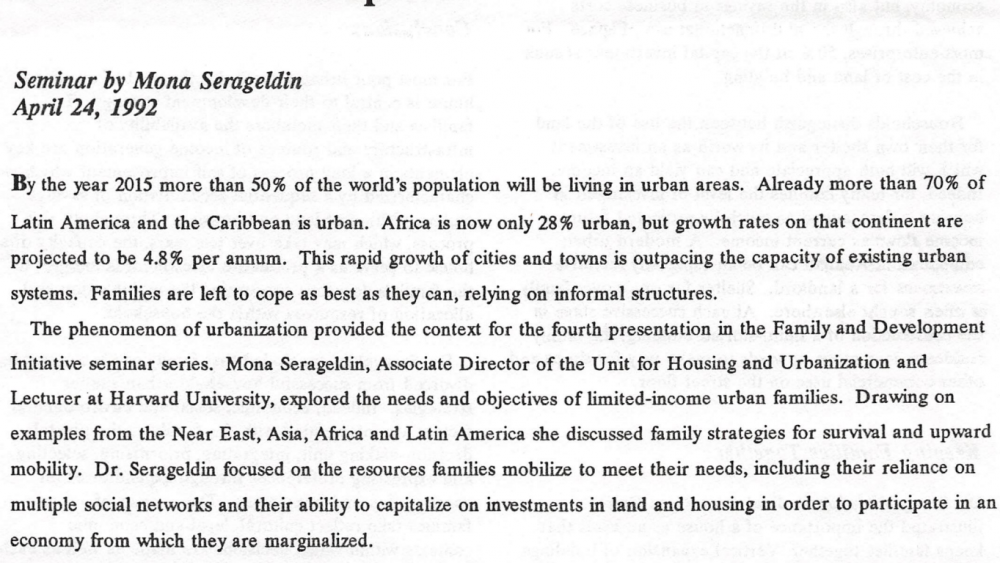Abstract
In 1996, the Unit for Housing and Urbanization collaborated with the Local Economic Professionals Association (Szczecin, Poland) to prepare capital improvement program for the city of Szczecin, Poland.
The program emphasized linking land management strategies to the provision and financing of infrastructure. The development of public/private partnership identified in the strategy documents included methods of packaging projects in order to build rehabilitation and neighborhood improvements.
This technical assistance project was later used to prepare a teaching case for an Executive Seminar on Urban Planning and Local Economic Development taught in Iasi, Romania on March 20-23, 2001, organized by the GSD in association with the Research Triangle Institute, and as part of the USAID Local Government Assistance Program. Documents include case studies and 5 tables containing detailed outlines of strategic goals.
Excerpt
[Excerpt: The Capital Improvement Program, City of Szczecin: (Case Study), page 7]
“Supportive Policies and Strategies: A series of strategy documents within key development sectors were produced and used as a guide for the development of the capital investment plan. These include:
● A renovation strategy for commercial and residential buildings in city center;
● A housing policy for the entire city.
● Master Plan for central heating;
● Master Plan for waste management;
● Master Plan for water supply and sewage management.
“Other reports and studies pertaining to the Capital Investment Program (CIP) included transport studies for Szczecin and an analysis of the city’s regional and macro-regional functions and responsibilities. The reports have generated a valuable database outlining the range of investment requirements in individual sectors. These reports also formed the basis for a more extensive review of the Conditions and Directions Of Urban Planning for The City of Szczecin and a City Development Strategy.”
“These reports identified investment priorities that would promote balanced development for the city. The most important of them will be the specifications of investment projects graded according to their priority. Together, these Strategies and Master Plans provide analysis of effective sectoral management methods for the city.”
See related I2UD projects below
| Project Year: | 1996 |
| Project Type: | Technical Assistance |
| Geographic Regions: | Szczecin, Poland |
| Reports: | The Capital Improvement Program, City of Szczecin (Case Study) The Capital Improvement Program, City of Szczecin (Case Study for Seminar, March 2001) Table 1: Planning of Housing Development Table 2: Communal Land Development Table 3: Management of Communal Housing Stock Table 4: Modernization of Communal Housing Stock and its Neighborhood Table 5: Satisfying Apartment Needs |
| Authors: | John Driscoll; Mona Serageldin |
| Sponsors: | Local Economic Professionals Association (Szczecin, Poland); Center for Urban Development Studies, Harvard University Graduate School of Design |
| Categories: | Informal Settlements and Urban Upgrading |
| ID: | 1996_06_002 |
Related I2UD Projects
Related by – City or Community Case Studies
“Planning for Climate Adaptation Program” for Four Dominican Republic Municipalities: Santo Domingo National District, Santiago de los Caballeros, San Pedro de Macoris, and Las Terrenas, 2015
“National Urban Policies in Arab States,” Regional Assessment and Case Studies on NUPs in Egypt, Jordan, Morocco, Saudi Arabia and Sudan, 2014
“Arusha Urbanization Strategy and Urban Development Plan,” Development Strategy for Arusha Municipality, Tanzania, 2009-2012
ICLRD: Urban Reconciliation Case Studies for Public Housing Estates in Ireland and Northern Ireland, with Study Profile on the Basel Metropolitan Area, 2010-2012
Executive Training Course 2006: “Strategic Planning for Sustainable Infrastructure Development,” Workshop Curriculum with Case Studies, Pretoria, South Africa, 2006
IEP 2003: “Infrastructure and Partnerships for Local Economic Development” in Pretoria and Bloemfontein, South Africa, International Education Programs, 2003
IEP 2002: “Strategic Planning for Local Development & Urban Revitalization,” Program Overview, International Education Programs, 2002
Workshops on “Strategic Planning and Management of Municipal Infrastructure Programs,” from Review of Grant-Funded MIPs in South Africa, May-June 1999
“Housing Microfinance Initiatives,” Case Study for USAID Microenterprise Best Practices Initiative, 1999-2000
ITP 1998: “The Role of Public/Private Partnerships in Urban Improvements,” with Case Studies on Kreuzberg, Berlin (Germany), GIS Mapping on Cape Cod (US) and the Maarouf Quarter of Cairo (Egypt), 1998
“City of Szczecin Capital Improvement Program,” Case Studies for Technical Assistance Program, Szczecin, Poland, 1996
ITP 1994: “Revitalization in Older Urban Spaces,” Upham’s Corner, Dorchester, Boston, South Boston, and New Haven (US); Montpellier (France); and Cork (Ireland) with Case Studies, International Education Programs, 1994
“Introduction to Local Finances,” Teaching Monographs and Case Studies on Finance Management, by Visiting Lecturer David C. Jones, 1994-1999


